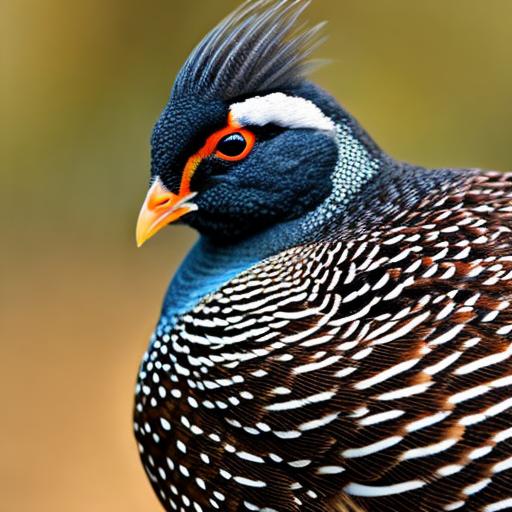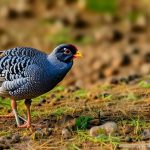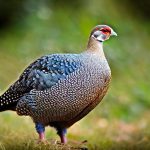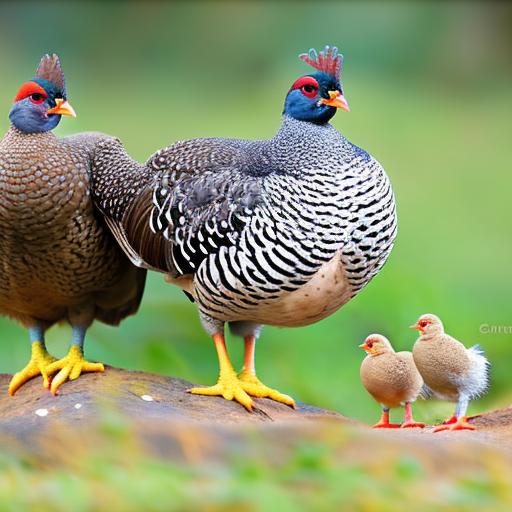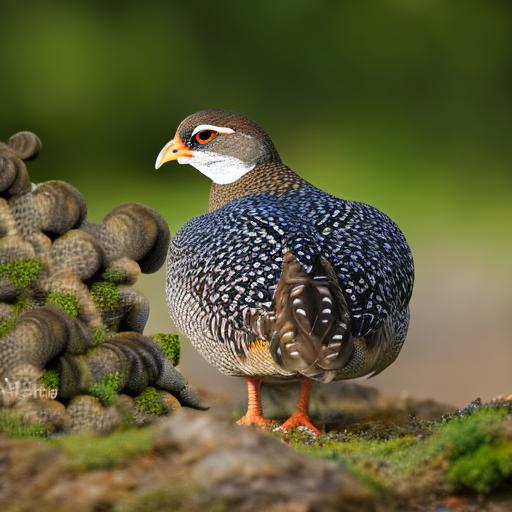Guinea fowl are unique birds that have specific needs when it comes to their care and housing. These birds are known for their loud calls, insect-eating habits, and ability to act as natural pest control. When it comes to their housing needs, guinea fowl require a shelter that provides protection from predators, extreme weather conditions, and adequate space for their natural behaviors. Understanding the needs of guinea fowl is crucial for providing them with a suitable living environment that promotes their health and well-being.
Guinea fowl are social birds that thrive in a flock environment. They are active foragers and require ample space to roam and explore. Additionally, guinea fowl are known for their roosting behavior and need a shelter that provides them with a safe and comfortable place to rest at night. Understanding the natural behaviors and social dynamics of guinea fowl is essential for creating a suitable living environment for these birds. Providing them with a shelter that meets their needs will ensure that they are happy, healthy, and able to exhibit their natural behaviors.
Key Takeaways
- Guinea fowl have specific needs for shelter, heating, ventilation, and bedding to thrive.
- A suitable shelter for guinea fowl should provide protection from predators and the elements.
- Heating sources such as heat lamps or heated pads can be used to keep guinea fowl warm in colder temperatures.
- Proper ventilation is essential to prevent moisture buildup and maintain air quality in the shelter.
- Adequate bedding, such as straw or wood shavings, should be provided to keep guinea fowl comfortable and clean.
Providing a suitable shelter
When it comes to providing a suitable shelter for guinea fowl, there are several factors to consider. The shelter should be spacious enough to accommodate the size of the flock and allow for natural behaviors such as foraging and roosting. Additionally, the shelter should provide protection from predators and extreme weather conditions. A secure coop with a fenced outdoor area is ideal for housing guinea fowl, as it allows them to roam and forage while keeping them safe from predators.
The shelter should also have nesting boxes or areas where guinea fowl can lay their eggs. These nesting areas should be secluded and comfortable to encourage egg laying and provide a safe environment for hatching and raising chicks. Providing a suitable shelter for guinea fowl is essential for their health and well-being. A well-designed coop will not only protect them from predators and extreme weather but also provide them with a comfortable and secure environment where they can exhibit their natural behaviors.
Using heating sources
In colder climates, providing heating sources in the guinea fowl shelter is essential for keeping the birds warm and comfortable. There are several heating options available, including heat lamps, radiant heaters, and heated perches. Heat lamps are a popular choice for providing supplemental heat in the coop, as they emit warmth and can be easily installed in the shelter. Radiant heaters are another effective option for providing consistent heat in the coop, as they distribute warmth evenly and are energy-efficient.
Heated perches are also a great option for providing warmth to guinea fowl, as they allow the birds to roost comfortably while staying warm. When using heating sources in the guinea fowl shelter, it is important to follow safety guidelines and ensure that the heating equipment is installed properly to prevent fire hazards. Providing heating sources in the guinea fowl shelter is crucial for keeping the birds warm and healthy during cold weather.
Ensuring proper ventilation
Proper ventilation is essential for maintaining a healthy environment in the guinea fowl shelter. Good ventilation helps remove excess moisture, ammonia, and airborne pathogens from the coop, which can lead to respiratory issues and other health problems in the birds. Ventilation also helps regulate temperature and humidity levels in the shelter, creating a comfortable living environment for the guinea fowl.
There are several ways to ensure proper ventilation in the guinea fowl shelter, including installing windows, vents, and fans to promote air circulation. It is important to regularly clean and maintain the ventilation system to prevent blockages and ensure that fresh air can flow freely through the coop. Proper ventilation is crucial for promoting the health and well-being of guinea fowl and should be a priority when designing and maintaining their shelter.
Providing adequate bedding
Adequate bedding is essential for creating a comfortable and hygienic living environment for guinea fowl. The bedding should be absorbent, easy to clean, and provide insulation against cold temperatures. Common bedding materials for guinea fowl include straw, wood shavings, and hay. These materials provide a soft and comfortable surface for the birds to rest on while absorbing moisture and odors from the coop.
It is important to regularly clean and replace the bedding to maintain a clean and healthy living environment for the guinea fowl. Dirty or wet bedding can lead to health issues such as respiratory problems and skin infections in the birds. Providing adequate bedding is crucial for promoting the health and well-being of guinea fowl and should be a priority when setting up their shelter.
Offering supplemental heat during extreme cold

During extreme cold weather, offering supplemental heat in the guinea fowl shelter is essential for keeping the birds warm and healthy. In addition to using heating sources such as heat lamps or radiant heaters, providing extra insulation in the coop can help retain heat and protect the birds from harsh temperatures. Insulating the walls, ceiling, and floor of the shelter can help maintain a comfortable temperature inside while reducing heat loss.
It is important to monitor the temperature inside the coop regularly and adjust the heating sources as needed to ensure that the guinea fowl are kept warm without overheating. Offering supplemental heat during extreme cold weather is crucial for protecting the health and well-being of guinea fowl and should be a priority for their care during winter months.
Monitoring their behavior and adjusting as needed
Monitoring the behavior of guinea fowl is essential for ensuring that their housing needs are being met. Observing their activity levels, eating habits, and social interactions can provide valuable insight into their well-being and comfort in the shelter. If any changes in behavior are observed, such as decreased activity or signs of distress, adjustments should be made to address any potential issues with their housing environment.
Regularly inspecting the shelter for cleanliness, structural integrity, and proper functioning of heating and ventilation systems is also important for maintaining a healthy living environment for guinea fowl. Making necessary adjustments based on their behavior and needs will ensure that they are provided with a suitable shelter that promotes their health and well-being.
In conclusion, understanding the needs of guinea fowl is crucial for providing them with a suitable living environment that promotes their health and well-being. From providing a spacious shelter with proper ventilation and heating sources to offering adequate bedding and monitoring their behavior, there are several factors to consider when caring for these unique birds. By prioritizing their housing needs and making necessary adjustments as needed, guinea fowl can thrive in a safe and comfortable environment that allows them to exhibit their natural behaviors.
Looking for ways to keep your guinea fowl warm during the colder months? Check out this informative article on where to put your chicken coop for optimal warmth and protection. Proper positioning of the coop can make a significant difference in keeping your guinea fowl cozy and comfortable. Additionally, consider converting a shed into a chicken coop, as discussed in this helpful guide on shed conversion tips. And if you’re looking to provide your guinea fowl with more space to roam while still keeping them warm, explore these practical chicken coop run plans for added protection and freedom of movement.
FAQs
What are some ways to keep guinea fowl warm?
Some ways to keep guinea fowl warm include providing a well-insulated coop, using heat lamps or heated pads, and ensuring they have access to dry bedding.
What temperature is too cold for guinea fowl?
Guinea fowl can tolerate temperatures as low as 10°F (-12°C), but they may need additional warmth if temperatures drop below this.
How can I insulate my guinea fowl coop?
You can insulate a guinea fowl coop by using materials such as straw, hay, or wood shavings for bedding, sealing any drafts, and adding insulation to the walls and roof.
Are there specific breeds of guinea fowl that are more cold-hardy?
Some breeds of guinea fowl, such as the Helmeted Guinea Fowl, are known to be more cold-hardy than others and may require less additional warmth in colder temperatures.
What are the signs of hypothermia in guinea fowl?
Signs of hypothermia in guinea fowl include lethargy, shivering, pale comb and wattles, and a drop in egg production. If you suspect your guinea fowl is suffering from hypothermia, seek veterinary care immediately.
Meet Walter, the feathered-friend fanatic of Florida! Nestled in the sunshine state, Walter struts through life with his feathered companions, clucking his way to happiness. With a coop that’s fancier than a five-star hotel, he’s the Don Juan of the chicken world. When he’s not teaching his hens to do the cha-cha, you’ll find him in a heated debate with his prized rooster, Sir Clucks-a-Lot. Walter’s poultry passion is no yolk; he’s the sunny-side-up guy you never knew you needed in your flock of friends!

